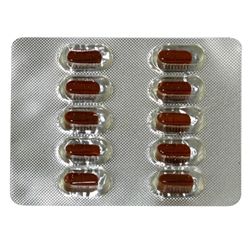

 
|
| < Back | ||||||
| Alberto Baruffaldi | ||||||
| About this company : Business Consultant | ||||||
| Contact : Alberto Baruffaldi | ||||||
| Headquarters : Via Monte Grappa 76, Lainate, MI, 20020, Italy | ||||||
| Phone : 3408940331, Fax : 0242108202 | ||||||
| Email : Log on to trade instantly | ||||||
 | Mpg-Caps: reduce nocive emissions and fuel usage When an MPG-CAP™ is added to the fuel tank, the fuel carries it to the combustion chamber. Its ingredients are used to treat the metal surfaces by forming a film that is technically called thermally derived oxidation. The carboxylic metal creates an oxide residue on the hot surfaces at the time of combustion. First of all, the MPG-CAPS™ change the surface heat absorption characteristics of the metal. The fuel and air mixture produces energy in the form of heat that creates expansion that drives the piston down, and the film inhibits the transfer of radiant heat. This directly results in higher combustion temperature, greater expansion, and more power. The second benefit the MPG-CAP™ film provides is a polished surface effect that allows more even distribution of the fuel. It can be compared to the beading of water on a polished paint job. The micro film attracts the liquid fuel resulting in better fuel distribution that shapes the charge to yield more power. The third benefit of the film is by serving as a catalyst precursor to react with the catalyst component in the MPG-CAPS™ themselves. The active compounds of the MPG-CAPS™ in combination with the heat in the cylinder cause a catalytic reaction that promotes better disassociation of chemicals and better burn. The catalytic reaction is also exothermic and produces heat. Altogether, these three benefits result in a total of 30 to 40% more expansion in the cylinder with an equal amount of fuel. Lastly, and perhaps most importantly of all, is the reduction of emissions resulting from the use of MPG-CAPS™. The catalytic process found in catalytic converters on exhaust systems is started in the firing cylinder, which reduces the formation of nitrogen oxides (NOx). The work done by the converter is reduced, and life of the converter is extended. | |||||
| > Add to cart | ||||||
|
| ||||||
 |
|
 |
|

Know-How | Trading Precaution | Phishing Alerts | SOAOnDemand! | VAR 360 | RSS Feed | ||
| Copyright © 2024 MarginUp All Rights Reserved. MarginUp User Agreement and Privacy Policy. |
||